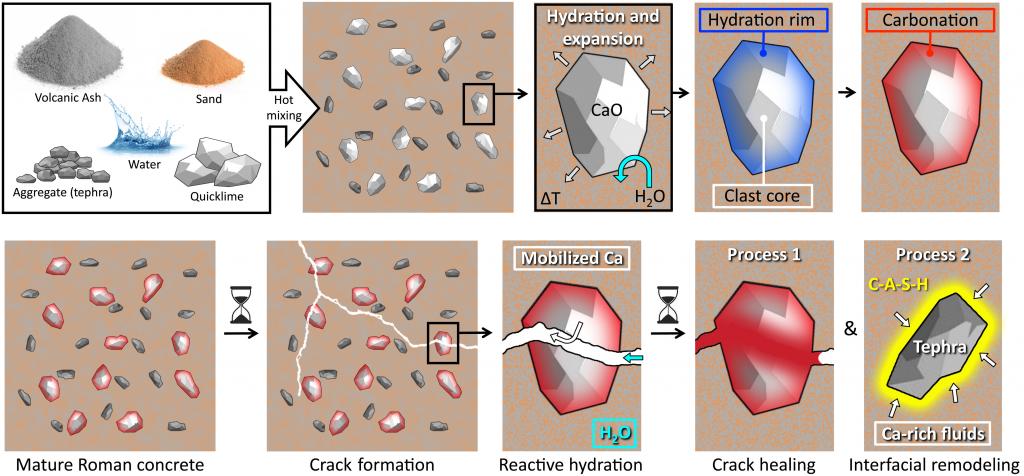ForumIAS announcing GS Foundation Program for UPSC CSE 2025-26 from 19 April. Click Here for more information.
ForumIAS Answer Writing Focus Group (AWFG) for Mains 2024 commencing from 24th June 2024. The Entrance Test for the program will be held on 28th April 2024 at 9 AM. To know more about the program visit: https://forumias.com/blog/awfg2024
Source: The post is based on the article “Roman secret to durable architecture? Self-healing concrete” published in Down To Earth on 13th January 2023.
What is the News?
New research from the Massachusetts Institute of Technology, Harvard University, and laboratories in Italy and Switzerland have discovered the secret behind Roman construction abilities.
What was the secret behind ancient Roman construction abilities?

The ancient Romans were masters of engineering, constructing vast networks of roads, aqueducts, ports and massive buildings, whose remains have survived for two millennia.
Many of these structures were built with concrete: Rome’s famed Pantheon, which has the world’s largest unreinforced concrete dome and was dedicated in 128 CE is still intact.
For many years, researchers assumed the key to the ancient concrete’s durability was based on one ingredient: Pozzolanic material, such as volcanic ash from the area of Pozzuoli on the Bay of Naples.
Under closer examination, the researchers found the ancient samples also contain small, distinctive, millimeter-scale bright white mineral features, which have been long recognised as a ubiquitous component of Roman concretes. These white chunks often called “lime clasts” originate from lime, another critical part of the ancient concrete mix.
The lime casts were earlier thought of as evidence of sloppy mixing practices or poor-quality raw materials.
On close examination, they found the Romans employed a Hot mixing method and used quicklime in conjunction with or instead of slaked lime for producing concrete.
What is the hot mixing process?
During the hot mixing process, the lime clasts created a brittle structure with a reactive calcium source. The calcium would travel through the lime clasts, react with water and quickly fill any cracks.
Based on these findings, the team has now concluded that Hot Mixing was actually the key to the super-durable nature.




